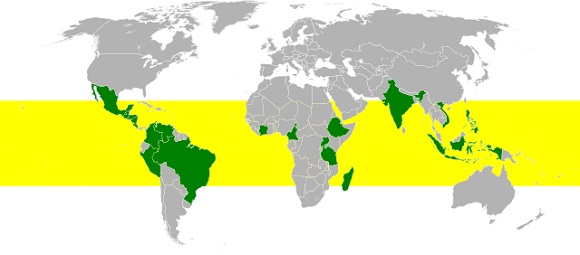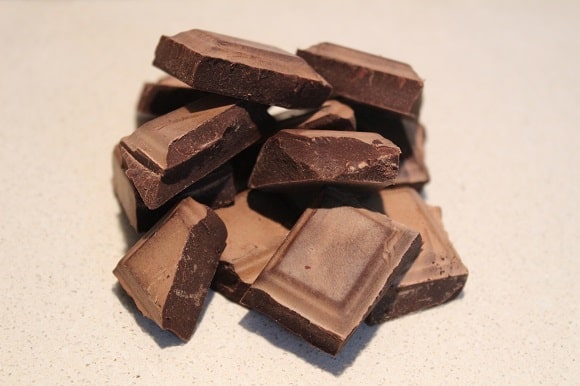Have you ever wondered why some chocolate types taste so much like coffee?
Coffee beans and cocoa beans (of which chocolate is made) aren’t closely related, but their flavors can often be very similar. How can that be?
Coffee, cocoa, and dark chocolate contain significant amounts of antioxidants. The most prominent is caffeine, which has a very bitter taste. Their similar production processes also contribute to the overlapping of flavors.
Keep reading this article and find out what makes chocolate taste like coffee, if all chocolate types have a coffee-like taste, and why Vietnamese coffee sometimes tastes like chocolate.
Why Do Chocolate and Coffee Have Similar Flavors?
If you’ve ever eaten dark chocolate and enjoyed a cup of coffee, you’ve probably noticed a certain flavor similarity.
Many people out there wonder why the flavor of chocolate reminds them of the taste of coffee and vice versa!
In fact, some even believe that dark chocolate, or cocoa, is partly or entirely made from coffee.
However, chocolate is not made from coffee. Neither is coffee made from chocolate!
But why do they taste so similar, then? How is that possible?
There are really four explanations for the flavor similarity of dark chocolate (or cocoa) and coffee:
Geography

Both coffee beans and cocoa beans grow in a region called the bean belt.
This bean belt spans about 25 degrees north and south of the equator, covering the tropical regions of Central and South America, Africa, Asia, and Oceania.
Many of the countries within this belt are major coffee and cocoa producers, and some of the biggest players include Peru, Indonesia, Columbia, Ivory Coast, and Costa Rica.
As coffee and cocoa plants often grow in the same areas, they are biologically and chemically reasonably close to each other.
In many lower-altitude regions of the bean belt, natural or artificial cross-breeding between the two plants occurs frequently.
This has led to some cocoa beans that have developed minor or major coffee flavors and coffee beans that adopted a specific chocolatey flavor.
However, this only applies to some coffee and cocoa bean types, so we must keep digging here!
Production Process

Cocoa and coffee beans also go through a very similar production process.
Both get fermented, dried, and roasted to varying degrees.
For one thing, the process of fermentation simultaneously decreases some of the bean’s bitterness and increases its sweetness, bringing out the cocoa and coffee beans’ rich and deep flavors that we all love so much.
For another, the beans’ roast level affects their overall acidity.
The longer the beans are roasted, the more sugars have caramelized, further increasing the sweetness and overall flavor balance of the cocoa and coffee beans. That’s why light roast and medium roast coffees taste more bitter and acidic than medium-dark and dark roasts.
Through this shared production process, cocoa and coffee beans gain this balance between bitterness and sweetness, which explains their flavor similarities.
Of course, in most beans, the bitter taste remains notable, giving coffee, cocoa, and dark chocolate their distinct bitter flavors.
But where does the bitterness actually come from?
Antioxidants

Coffee and chocolate contain high amounts of antioxidants, one of the two significant parts contributing to their similar flavors.
Coffee contains the following antioxidants:
- cafestol
- trigonelline
- chlorogenic acid
- melanoidins
- quinine
Cocoa, on the contrary, contains these antioxidants:
- catechin
- epicatechin
- procyanidins
So what, you may think! Antioxidants are incredibly healthy, but what do they have to do with the flavor of coffee and cocoa?
Well, antioxidants give a perceptible bitter taste to most foods!
As mentioned earlier, the common flavor factor between coffee and dark chocolate is, predominantly, their bitterness!
And antioxidants play a huge part here!
Oh, and speaking of bitter flavors and antioxidants! There is yet another very familiar compound in coffee and dark chocolate that is super rich in antioxidants; caffeine!
Caffeine
Coffee and dark chocolate contain significant amounts of caffeine, and like most other antioxidants, caffeine has a bitter taste to it. And a fairly pronounced one at that!
There is enough of it in both cocoa and coffee to give these foods a distinctly bitter flavor which our taste buds perceive as fairly similar.
In the next sections of this article, you can see just how much caffeine there is in different types of coffee and dark chocolate.
How Much Caffeine Is in Coffee?
| Type of Coffee | Amount of Caffeine (in 1 fl oz) |
| Black | 11,8 mg |
| Espresso | 26,5 mg |
| Cappuccino | 10,9 mg |
| Macchiato | 10,9 mg |
| Latte | 10,9 mg |
| Instant | 7,9 mg |
| Decaffeinated (1 packet, 2g) | 2,4 mg |
How Much Caffeine Is in Chocolate?
| Type of Chocolate | Amount of Caffeine (in 1 oz) |
| Dark (50%) | 12 mg |
| Dark (70%) | 25 mg |
| Unsweetened Cocoa Powder | 66 mg |
| Milk | 5,8 mg |
| White | 0 mg |
As you can see, cocoa powder and dark chocolate contain more caffeine than most coffee types, which is a pretty unknown fact!
Most people believe there is way more caffeine in coffee than in cocoa because they compare coffee to hot chocolate (a.k.a. cacao).
And while it’s true that an 8-ounce cup of hot chocolate only contains about 9 mg of caffeine (while an 8-ounce cup of black coffee contains 95 mg), pure and dry cocoa powder actually contains a lot more caffeine than coffee!
So next time you want to keep awake, forget about your coffee and eat some dark chocolate instead!
Do All Chocolate Types Taste Like Coffee?

Now that we have established that chocolate and coffee have overlapping flavors due to a similar production process and a significant amount of bitter-tasting antioxidants and caffeine, does that mean that all chocolate types have a flavor that reminds of coffee?
Not at all!
As previously mentioned, the chocolate’s bitter and coffee-like taste comes from the cocoa powder it contains.
The more cocoa powder the chocolate contains, the more distinct the bitterness gets.
But some chocolate types contain either little or no cocoa powder and hence only a little or no caffeine!
Regular milk chocolate, for example, contains about 25% cocoa powder (and lots of sugar), which means that it basically doesn’t have any coffee-like flavor.
Hershey’s famous milk chocolate contains only 11% cocoa, and Nestlé’s hot cocoa mix is 99% decaffeinated.
And then there’s white chocolate, which, technically, isn’t even real chocolate, as it contains no cocoa solids at all!
This type of chocolate is made of cocoa butter, lots of sugar, and some vanilla for extra sweet flavoring. No bitterness, no caffeine, and certainly no coffee-like taste!
Why Does Vietnamese Coffee Taste Like Chocolate?
Vietnamese coffee sticks out from the rest, as it’s often way stronger and sometimes has a distinct chocolatey flavor to it.
DID YOU KNOW: Vietnamese coffees are robusta types, which are roasted slowly and contain an unusually high amount of caffeine. This explains the often intense and bitter flavor of Vietnamese coffee.
That’s because coffee producers in Vietnam often add certain ingredients during the roasting process.
These can include rice wine, salt, and butter.
Butter can soften acidic and bitter flavors and makes coffee gain a touch of natural sweetness.
The result is a creamy and smooth hot beverage with varying degrees of chocolate flavors.
Related Articles
Recent Posts
Frozen pizza dough is generally pre-cooked, which means it is recommended and completely safe to put it directly on the oven rack for baking. The dough won't fall through the metal bars, and the...
Can You Deep Fry Frozen French Fries? (Important Food Facts)
You can and should deep fry your french fries while they are still frozen. This will reduce cooking time and enhance your fries' quality, as deep frying them will make them deliciously crispy on the...

